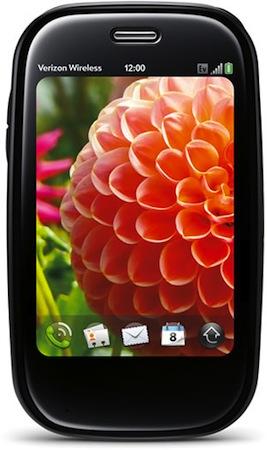First off, it's important to know that I actually had to think about this list prior to writing it. The market is so saturated with Android devices - tall, short, skinny, fat, low-end, high-end, and the like - that it required some thinking to come up with five non-Android phones.
I'm proud to present my top five list that excludes all things Android. No robots, no Froyo, no Eclair. It's important to note two things: (1) This is my personal list, not PhoneDog's, and (2) this list applies to today and to today only - ask me next week, and I'll probably name five different devices.
That said, here they are. Take a gander, let me know what you think, and be sure to list YOUR top five NOT Android phones in the comments section!

Where it excels: Web browsing. Music. Apps. For a high-end, fully equipped smartphone, battery life is very good.
Where it stumbles: Notifications system. The way you receive your text messages and other notifications. Irritating pop up boxes that interrupt your daily grind. Did I mention the notifications system?
Joking aside, in 2010, iPhone's archaic notifications system is downright annoying. I'm browsing a web page, talking to someone on the phone, or whatever other mobile task I enjoy doing, and BAM! Text message.
The lack of widgets is also a frustration, albeit a smaller one. When I want to check the weather on Andr...er, another device, I thumb over to another home screen and watch the widget update. On the iPhone, I have to stop what I'm doing, go to the homescreen, and open the application. The overall process has improved a bit since the introduction of multitasking in iOS 4, but it's still less convenient.
The verdict: To this day, the overall combination of features found on the iPhone appeals to the highest number of prospective buyers. That said, Apple needs to work on the notifications system and add widget support.

Where it excels: If I was comparing hardware alone, the HTC HD7 and iPhone 4 would stand in a class of their own. Like the iPhone, the HTC HD7 is an absolutely beautiful device with a lot of glass, metal, and pretty aesthetics. I spent a few minutes with the HD7 and Windows Phone 7, and there's a great deal of potential in the new operating system.
Where it stumbles: Windows Phone 7 suffers from some typical version 1.0 issues like the lack of copy and paste. That said, Microsoft is reentering the mobile sphere late, so customers may be less understanding.
The verdict: The software looks good and the hardware is absolutely amazing. Here's to hoping that the platform is able to deliver long-term.

Where it excels: Like Android (which we're not mentioning here, so forget I said it), webOS offers an exceptional notifications system. Instead of popping up in your face as you're working, notifications appear in the bottom part of the display. Outside of that, webOS is very intuitive, and offers a great all-around smartphone experience. The Pre Plus can be used with Touchstone, Palm's wireless charging solution.
Where it stumbles: In cell phone years, the form factor of the Palm Pre is OLD. Unveiled at CES in January of 2009, the Palm Pre Plus is still on the sales floor - and from the looks of it, the Palm Pre 2 is nearly identical. C'mon HPalm, we need a new form factor. Touchscreen slab, sideways slider, or a clamshell device - something that can take webOS to the next level.
The verdict: webOS is an incredibly functional platform that is in desperate need of new hardware.

Where it excels: Seamless integration between keyboard and touchscreen. I can be working away with the device closed, but when I want to type a long e-mail, I can slide the screen up and continue where I left off. With a WebKit browser and enhanced multimedia options, BlackBerry 6 is an improvement over OS 5.0.
Where it stumbles: For a flagship device, the Torch is painfully underpowered. I understand the argument that battery life is at stake, but there are times where the lag hurts the overall experience. Several times while browsing the web, I experienced the dreaded "checkerboard" issue, where the device would freeze as I attempted to zoom in and out.
The verdict: The Torch 9800 is a nice step forward for RIM, but they're really going to have to step up the internal specifications if they want to compete in 2010.

Where it excels: It offers the webOS experience in a thin, light, and pocketable form factor. When it launched, it served as a nice starting point for first-time smartphone buyers. The keyboard was easy to use, and it also offers wireless charging through Palm's Touchstone solution.
Where it stumbles: (See Palm Pre Plus)
The verdict: It's a nice mid-range smartphone with an awesome operating system, but like the Pre Plus, it's beginning to show its age.